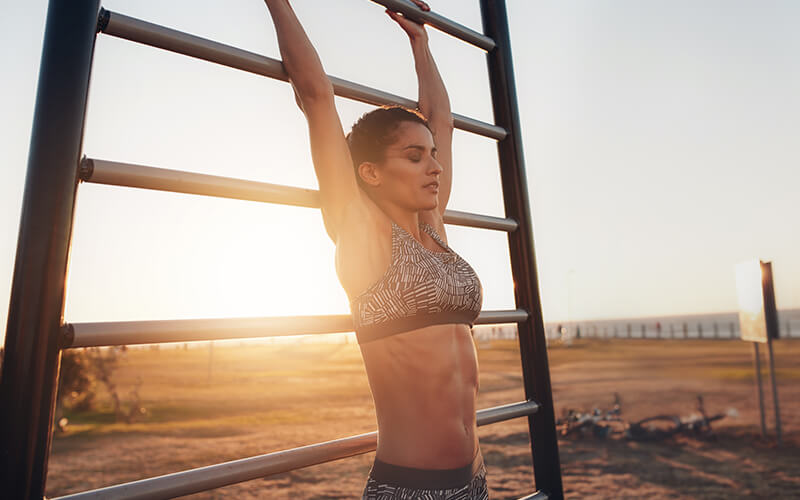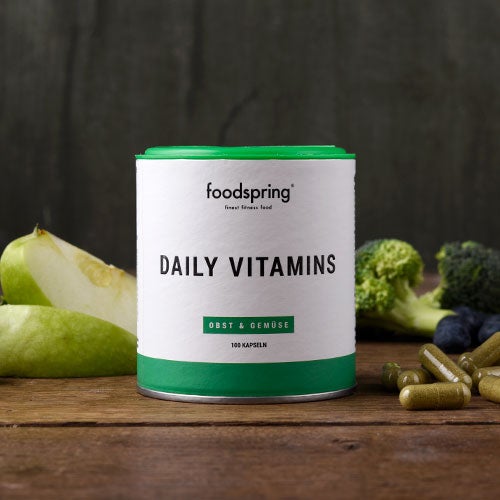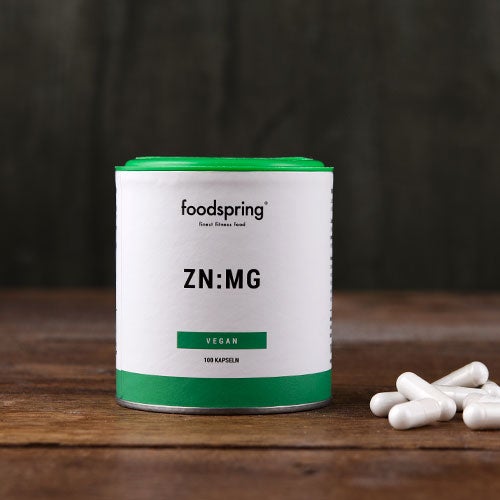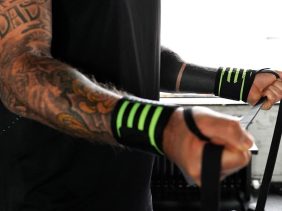Exercising in the Heat: Keep your cool when the temps rise!
 ©Jacob_Lund
©Jacob_Lund
While some enjoy a jog in the midday sun, many others prefer to take it easy when it’s sweltering outside. Feel like working up a real sweat – safely? We’ll tell you everything you need to know to keep exercising in the heat.
Is exercising in hot weather a good idea, or risky business?
When summer comes blazing in and it’s scorching hot outside, a lot of people think that working out is off the table. The reality is that exercising in the heat isn’t as hard as you think because your body actually adapts to the heat and the temperature outside, no matter how hot! Your body does a great job of keeping your body temperature at a steady 37° C at all times. In extreme heat, you’ll naturally sweat more because that’s your body’s way of keeping you cool.
Doing a workout in summer means that your body will have to work twice as hard to cool you down than it would if you were just out in the sun. The duration and intensity of your workout also determines how much water you lose. Remember, as you sweat, you also lose nutrients and electrolytes.
It’s also important to remember that there’s a difference between sun and heat as they can both have different effects on your workouts. Not everyone can tolerate the same level of heat though and in general you’ll need to adapt your training to suit your needs when the temperatures are above 28°C.
For many people, working out in the summer is challenging. Between the scorching sun and the overwhelming heat, it’s true that it’s not very motivating. Exercising in the heat can be difficult and you may not perform as well as you do in cooler weather. But as long as you take certain precautions, training in the heat poses no serious risks to your health.
7 tips for exercising in the heat
1. Stay hydrated.
As we’ve already mentioned, you lose fluids faster during the summer because you sweat more. That’s why it’s important to stay sufficiently hydrated. When you work out in the summer, your internal processes are working at full speed to keep your body temperature stable.
If you’re not sure whether you’re getting dehydrated, be it on a daily basis or during exercise, there’s an easy way to find out: weigh yourself before and after you work out. The weight difference will tell you just how much fluid you’ve lost.
During a workout, drinking something high in sodium is a good way to rehydrate yourself quickly — just be sure to take small sips. In general, tap water isn’t rich enough in nutrients to keep you hydrated during exercise all on its own. It’s essential to also refill on sodium, dextrose, calcium, and magnesium. If you sweat a lot and run a marathon, for example, your sodium levels can drop so dramatically that it can be dangerous.
That’s why sports drinks are so popular for athletes — they quickly replenish what the athletes need after hours of pumping iron, or pounding the pavement. After you’re done working out, though, water is what you should be reaching for — now it’s about getting back fluids, as opposed to minerals.
2. Make the most of fruit and vegetables.
Anyone who’s ever survived a heat wave knows how it can be a total appetite killer. Not to mention, we’re also losing more minerals and nutrients than we might normally because we’re sweating more. Yes, eating enough during the summer is tricky, but loading up on fresh fruits and vegetables makes the process a lot easier and fresher. Not to mention, they’re usually packed with liquid, giving you a hydration boost in addition to all those nutrients. In particular, keep water and mineral-rich fruits like pineapple and melon close by when you’re exercising in the heat.
Vitamins: your body’s vital companions
If you aren’t fulfilling all your vitamin and nutrient needs from your diet alone, use our Daily Vitamins to get the rest of what you need. These ideally dosed capsules are perfect for a stressful everyday life and provide you with everything you need. They’re the best of fruit and vegetables in capsule form.
- Carefully processed products
- Vegan
- Vitamins for important body functions
- Made in Germany
Zinc-Magnesium – For better performance
A deficiency in micronutrients such as zinc or magnesium can lead to major losses in productivity and reduced performance in everyday life. Why, though? Not getting enough of these two nutrients results in problems concentrating and general fatigue. Obviously that’s something we’re all happy to do without. And if you want to exercise in the heat, you need energy. Our ZN:MG capsules will help you feel re-energized and ready to work out, perfect if you’re hitting the gym regularly. That way you can feel your best all summer long.
- High-quality zinc gluconate and magnesium glycinate
- Vegan
- With malic acid for ideal absorption
- Made in Germany
3. Choose the right workout outfit.
Modern, functional clothing allows the skin to breathe and wicks away wetness, keeping you cool and comfortable. Naturally, that’s exactly what you want to wear during a workout when in the heat.
Of course, if you don’t have the budget for this kind of clothing, your best alternative is to simply wear as little as possible, taking care to apply sunscreen to the parts of your body that are bare. Perspiration is a double edged sword because while it does cool the body it also has a magnifying effect on your skin, which means you’re more likely to end up sunburnt if you’re sweating. Luckily, there are plenty of sunscreens specially designed for exercise that won’t leave an oily layer behind.

4. Pay attention to the intensity of your workout.
Because your pulse will increase much faster in the heat than in the cold, it’s essential to pay attention to your heart rate during cardio sessions and long workouts.
Certified trainers recommend keeping your heart rate five beats below normal in order to give your heart a break, because it has a lot more work to do when it’s hot out. If you don’t have a way to measure your pulse (such as a smartwatch), you can maintain it by simply training slightly slower than you usually do.

5. Find the right place and time to exercise.
Ozone levels are at their lowest in the morning. That’s also when the air is coolest and gyms are often empty.
Exercising during the hottest times of the day (between 12 and 4 pm) is a big no-no. That’s when you’re most at risk of overheating. The end of the afternoon is an ideal time to plan a workout, though, as the temperatures drop back down and the air is cooler.
For the sake of your skin and your body, it’s best to work out in a shady spot. And if you’re exercising outside, try to do it at the beach or in a forest. When all else fails, train at home or at the gym, wherever there’s air conditioning.
6. For fans of outdoor activities: remember to check the ozone and humidity levels.
Use your favorite weather app to determine the humidity and ozone levels on the day you plan to work out. When the ozone level limit exceeds 180 mg per cubic meter, the lungs and heart can be exposed to high levels of stress.
High humidity levels inhibit the evaporation of perspiration on the skin and prevents our body’s cooling system from functioning properly. In these situations, it’s twice as important to drink enough and move more slowly. In general, 50% humidity or higher in the air will make it more difficult for you to exercise.
7. Listen to your body.
Working out in the heat is not for everyone. That’s not a reason to ditch working out this summer altogether, though, because there are many easy ways to exercise in the heat while also being more attentive to your own needs and making yourself feel comfortable.
If you begin to feel overworked and overheated during your workout, stop, but do it gradually. Reduce the amount of weight you’re using, do fewer repetitions, and begin a recovery session.
If you have more serious symptoms like headaches, dizziness, vomiting, or lightheadedness you may already be suffering from heat stroke or heat exhaustion. In this case, stop exercising immediately, drink plenty of water, and put a cool, damp cloth on your face. And if you think you’ve had a heat-related health issue such as heat stroke or heat exhaustion, be sure to consult your doctor as soon as possible.
Working out in hot weather: Our conclusion
- Working out in the summer is doable!
- Working out in the heat is more difficult but no less healthy.
- Make sure you adapt your training when the temperature tops 28° C.
- Listening to your body is the ground rule of a healthy workout.
Our Tip
If you want to keep track of your progress, check out our free Body Check. Define your goals, calculate your BMI, and receive personalized fitness and nutrition advice.
Sources for this article
We at foodspring use only high-quality sources, including peer-reviewed studies, to support the facts within our articles. Read our editorial policy to learn more about how we fact-check and keep our content accurate, reliable, and trustworthy.































